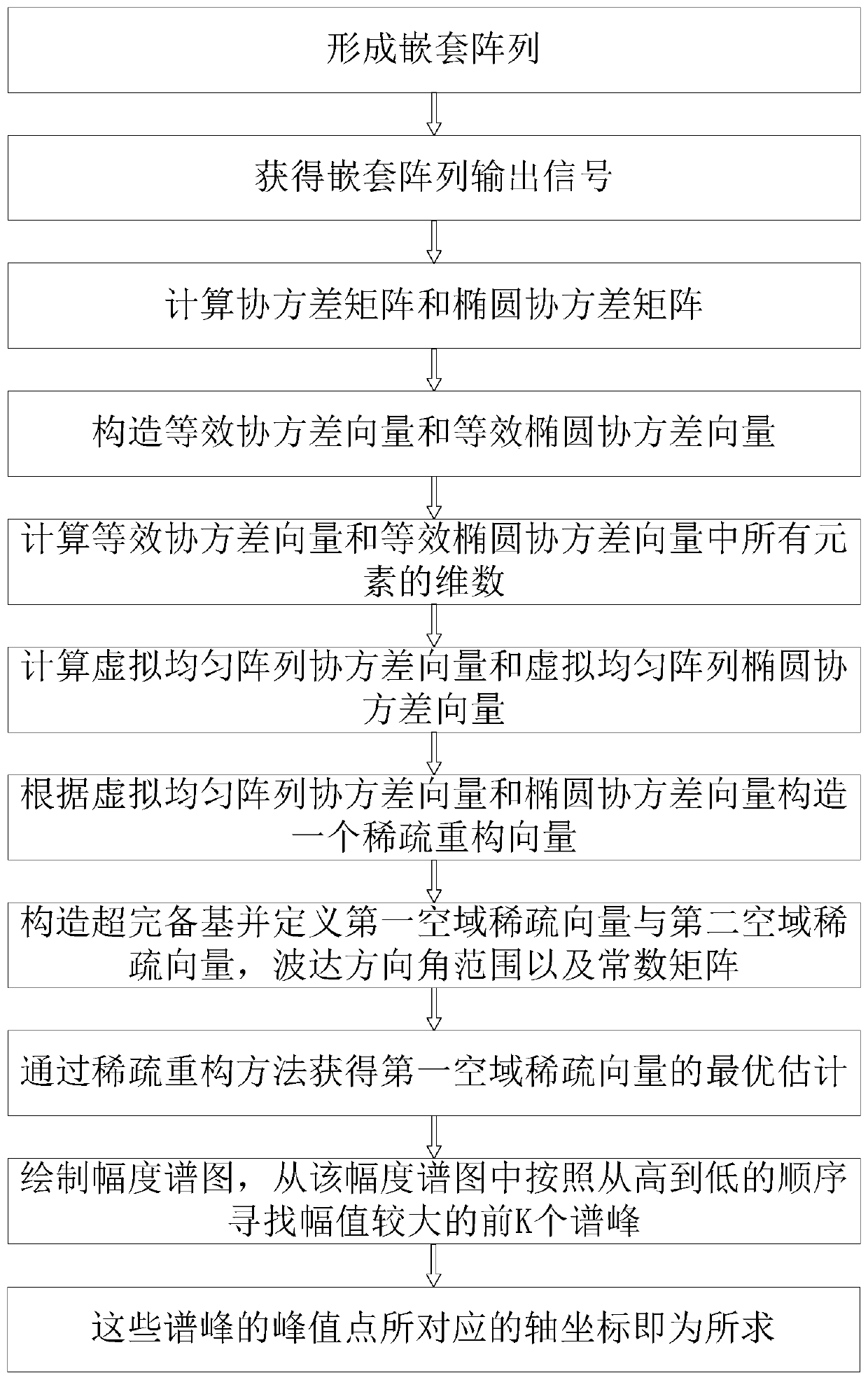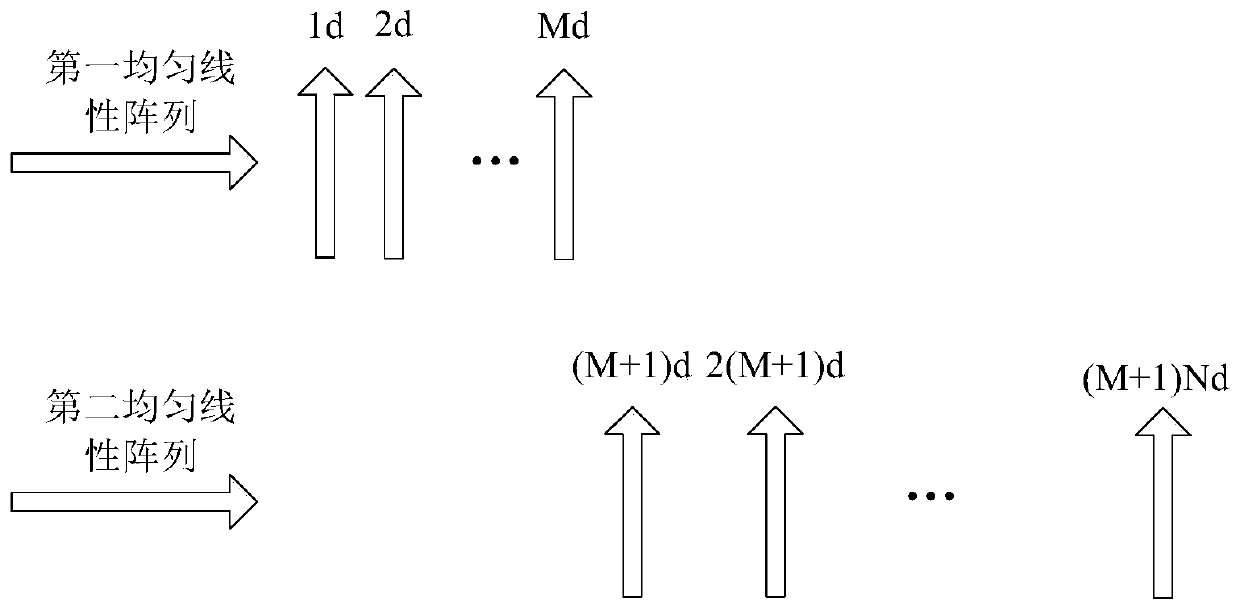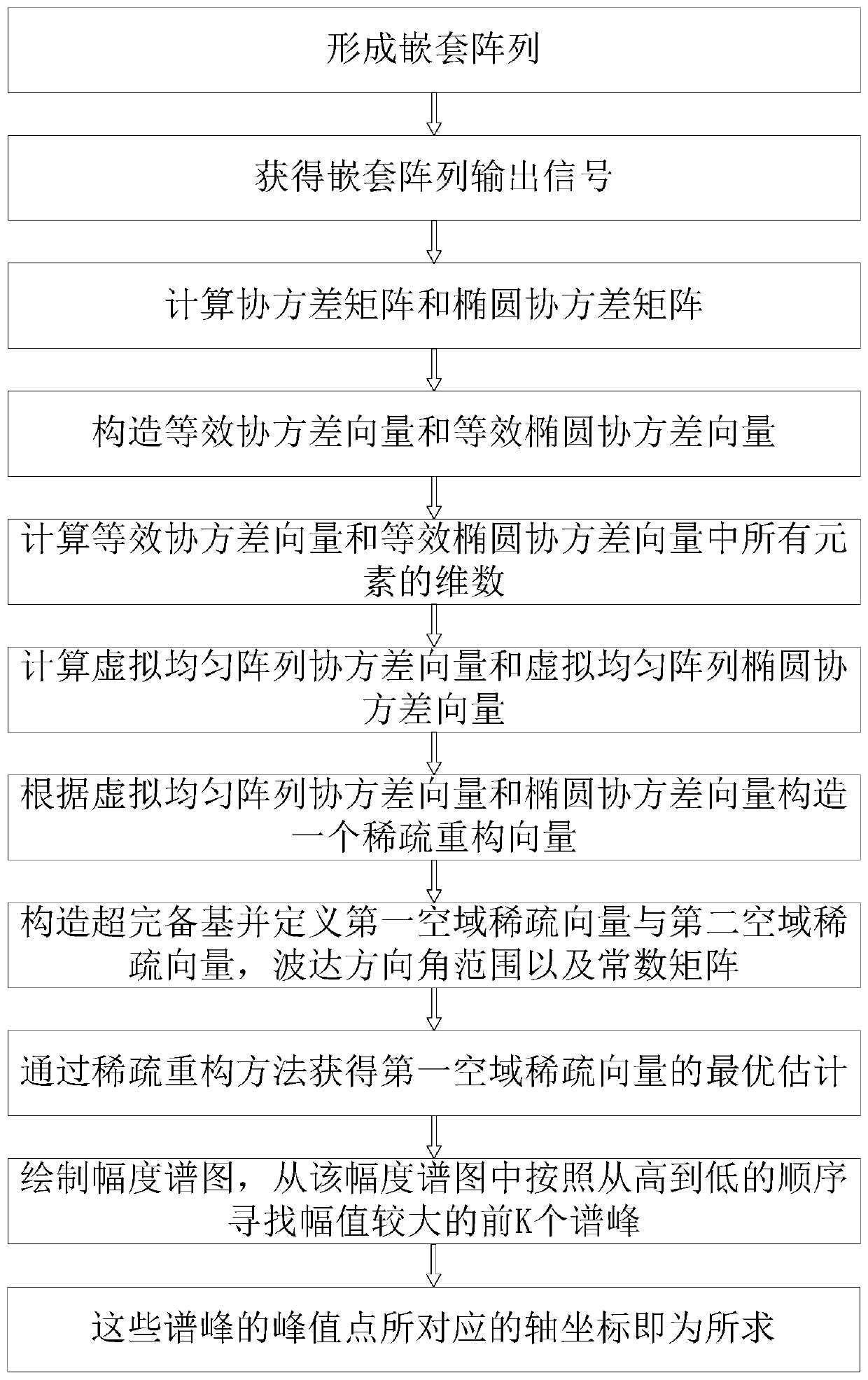A Direction of Arrival Estimation Method for Noncircular Signals Based on Compressive Sensing
A direction-of-arrival and non-circular signal technology, applied in the field of signal processing, can solve problems such as inability to estimate signals, no research on non-circular signals, waste of reconnaissance and positioning resources, etc., to achieve improved accuracy, improved utilization, and increased numbers Effect
- Summary
- Abstract
- Description
- Claims
- Application Information
AI Technical Summary
Problems solved by technology
Method used
Image
Examples
Embodiment Construction
[0034] refer to figure 1 , the implementation steps of this example are as follows:
[0035] Step 1: Form a nested array with M+N antenna receivers.
[0036] (1a) Call each antenna receiver an array element, use M antenna receivers to form the first uniform linear array a, and its array element spacing is d, define the first array element of the first uniform linear array a as The initial array element defines the initial array element position D(1)=1, and the other array element positions of the first uniform linear array a are sequentially D(2)=2, D(3)=3, D(4)= 4,..., D(M)=M; wherein, the value range of M is M≥1, the value range of d is 0<d≤λ / 2, and λ is the narrowband signal wavelength incident to the array;
[0037] (1b) Form the second uniform linear array b with N antenna receivers, the array element spacing is (M+1)d, and the array element positions of the second uniform linear array b are set to D(M+1)=M in turn +1, D(M+2)=2(M+1), D(M+2)=3(M+1), ..., D(M+N)=N(M+1), wh...
PUM
 Login to View More
Login to View More Abstract
Description
Claims
Application Information
 Login to View More
Login to View More - R&D
- Intellectual Property
- Life Sciences
- Materials
- Tech Scout
- Unparalleled Data Quality
- Higher Quality Content
- 60% Fewer Hallucinations
Browse by: Latest US Patents, China's latest patents, Technical Efficacy Thesaurus, Application Domain, Technology Topic, Popular Technical Reports.
© 2025 PatSnap. All rights reserved.Legal|Privacy policy|Modern Slavery Act Transparency Statement|Sitemap|About US| Contact US: help@patsnap.com



